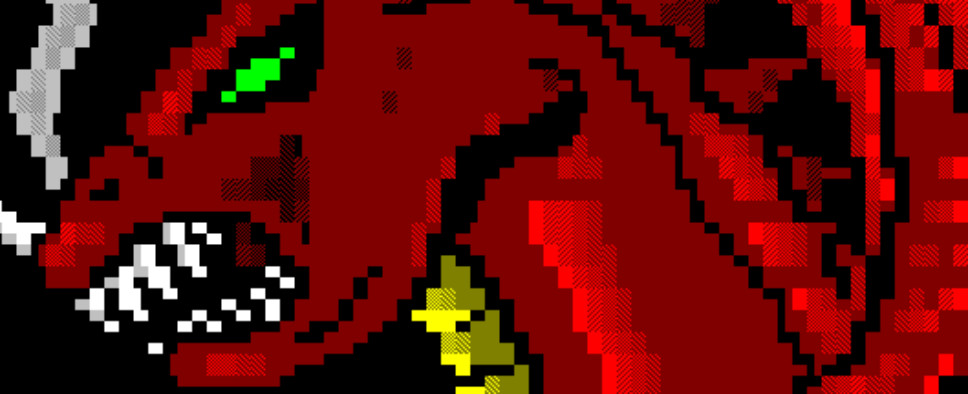BBS Door Games Retrospective
-
Category: News ArchiveHits: 2544

Before Internet was a part of pretty much everyone's daily life, and even before the advent of the world wide web itself, there were bulletin board systems, or BBS for short. They allowed you to communicate with people online and play the so-called “door games” that did a great job of paving the way for multiplayer RPGs. And if you head on over to Massively Overpowered, you'll find this retrospective article that looks back at the history of the BBS and some of its notable door games. A few snippets:
BBS? Is that like BBQ?
It was 1978, and one of the harshest blizzards Chicago ever witnessed slammed the city with up to 60 inches of snow. As the residents found themselves immobilized for weeks, Ward Christensen, an employee of IBM, decided to put his downtime to good use. The software equivalent of MacGuyver, Christensen was renowned for creating programs to do whatever he needed at the moment. In less than four weeks, Christensen and his friend Randy Suess created a “CBBS” — computerized bulletin board system — from scratch. This first BBS went online on February 16th with a meager setup: a S-100 computer with 64k RAM, two single-sided 8″ diskettes, and a 300-baud modem.
The idea behind the CBBS was to allow friends and organized groups to dial into a computer using a modem and leave messages or announcements for others to read at a later date. Initially, it was anything but massive. Only one person could call in at a time, usually at very slow upload/download speeds. Still, it became very popular,: The initial BBS received over 250,000 calls on its single phone line over the course of its life. Because of this invention, Christensen received multiple awards as a pioneer of the industry.
As the ’80s rolled along, technology advanced to the point where multiple people could log onto a BBS at the same time. Also, thanks to faster modems, the speed of data transfer allowed for more sophisticated programs. Hundreds of dedicated hobbyists known as sysops (systems operators) set up BBS servers and customized them with the hottest games and utilities of the day. The BBS peaked between 1994 and 1996 — right as the world wide web became prolific — and rapidly fell from view afterward. Still, for the better part of two decades, BBSes were the way for gamers, hackers, and hobbyists to connect, partially leading to the rise of multiplayer RPGs.
[...]
Legend of the Red Dragon
It’s a tale as old as RPGs themselves: There’s a bad dragon, he needs to die, and you’re the one stupid enough to confront him. In Legend of the Red Dragon (LORD), BBS gamers became fascinated with many of the same facets of MMOs that we appreciate today, such as exploring a challenging fantasy world, leveling up, conversing with NPCs, acquiring loot, and eventually taking on the big bad boss.
Players in the game were limited to a certain number of turns per day so that they wouldn’t hog the game 24/7. These turns could be used to perform a variety of activities, from adventuring to seducing the locals.
Released in 1989, LORD quickly became one of the most popular door games on various BBSes. Created by teenage Seth Able Robinson as a way to attract users to his BBS, other sysops discovered LORD and paid to host copies of it on their boards as well.
LORD grew over the years to provide a surprisingly deep roleplay experience, especially with its romantic simulator (characters could flirt, get married, contract STDs, get divorced, and have kids). The Escapist stated in 2008 that LORD seemed ahead of its time, especially in its treatment of sexuality.
Another feature of LORD is one that modern-day MMO developers have brought back: random daily events. Robinson also designed the game to be expandable via in-game modules that players or sysops could design and program.
A sequel, Legend of the Red Dragon II: New World, was released in 1992.
[...]
Dungeon Master
This generic-sounding title was actually somewhat of a pioneer in the BBS scene. Coming out in 1997 (the same year as Ultima Online), Dungeon Master allowed for true real-time multiplayer adventures through ASCII and 3-D fantasy environments.
Even more interesting was the ability for players to create their own dungeons and game modules for others to play. Characters would travel through a dangerous world dealing with curses, insanity, physical ailments, and packs of creatures. The creator emphasized the game’s more visual nature that helped to bring the title alive.
And if after reading this article you feel a sudden urge to revisit the glory days and play some of the old BBS classics, you can do so right here on GameBanshee.

